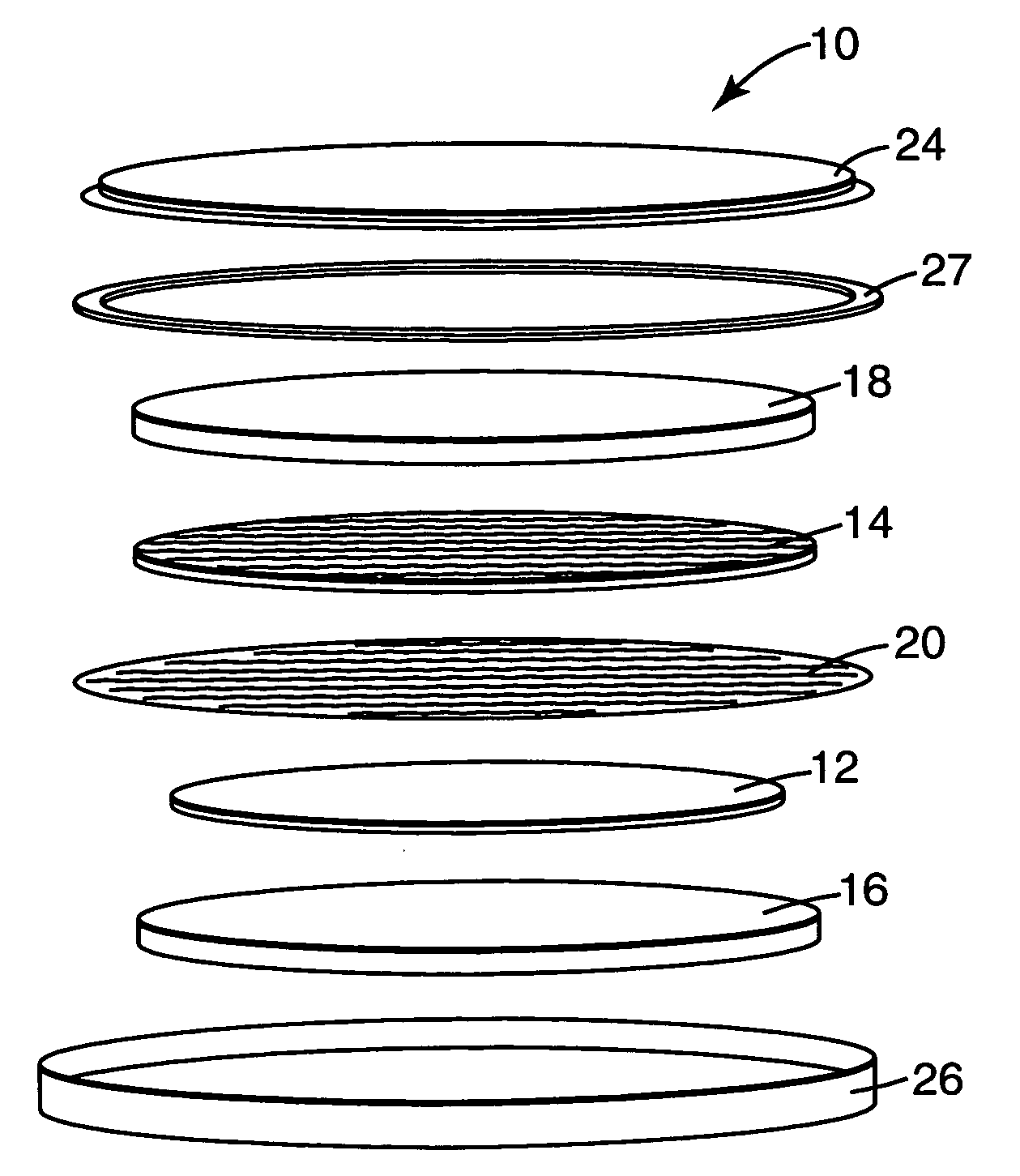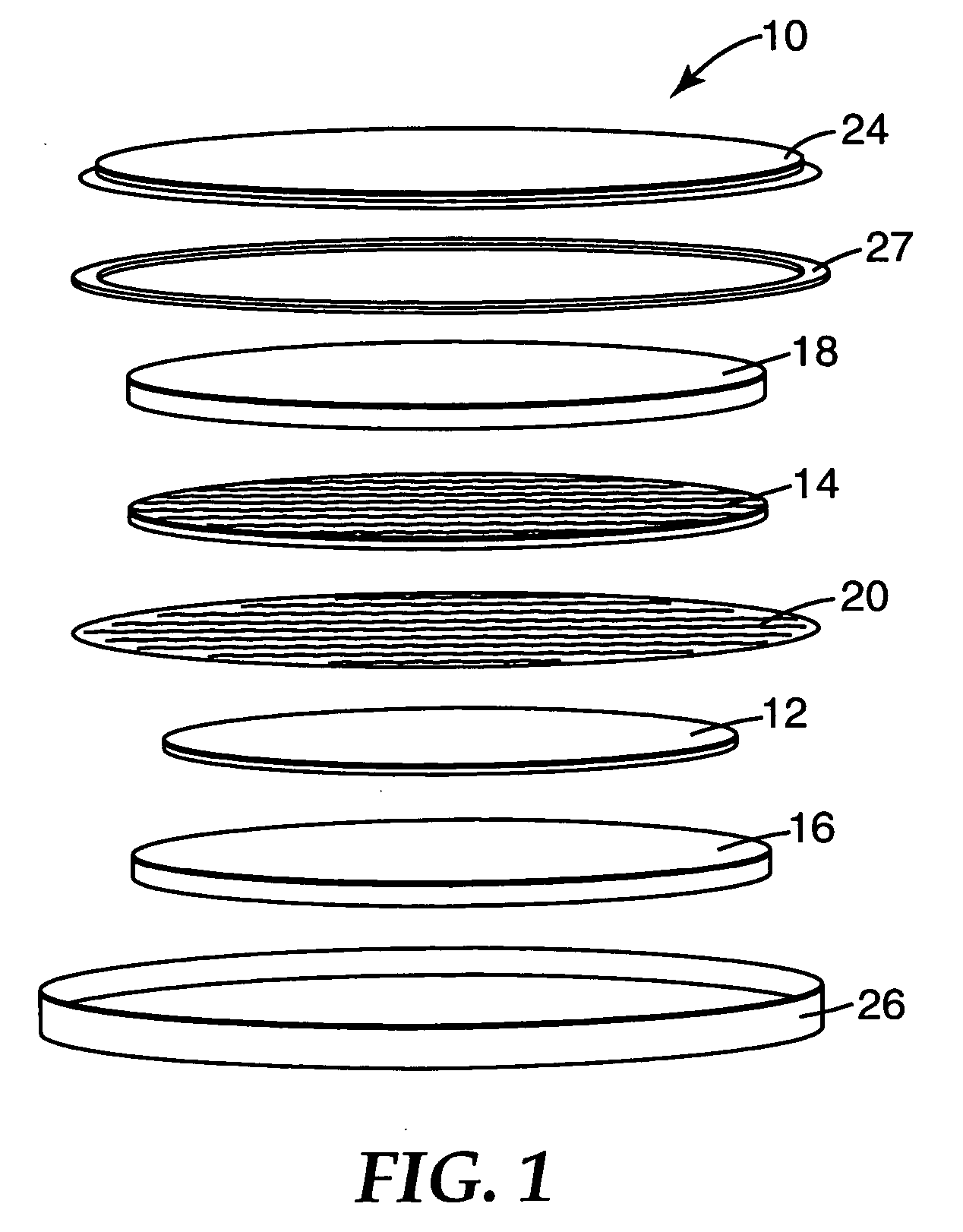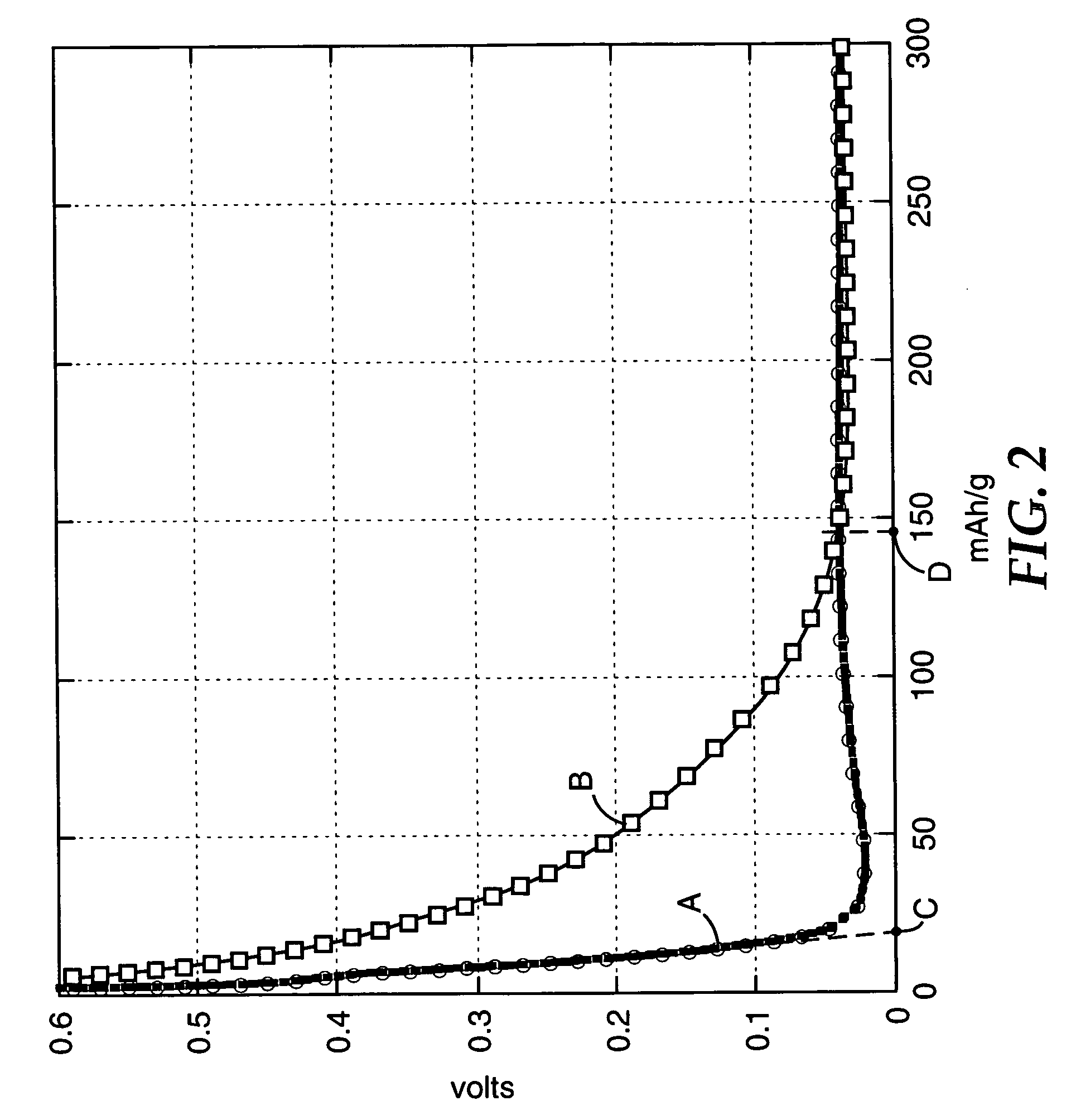Polyimide electrode binders
- Summary
- Abstract
- Description
- Claims
- Application Information
AI Technical Summary
Benefits of technology
Problems solved by technology
Method used
Image
Examples
preparatory example 1
Preparation of Aliphatic Polyimide Precursor BuTDA-ODA from 1,2,3,4-butanetetracarboxylic Dianhydride and 4,4′-oxydianiline
[0045] 3 Grams (0.015 moles) 4,4′-oxydianiline were added to 33.8 grams NMP in a round-bottomed vessel. 2.97 Grams (0.015 moles) 1,2,3,4-butanetetracarboxylic dianhydride (“BuTDA”, prepared from 1,2,3,4-butanetetracarboxylic acid by refluxing in acetic anhydride) were added to the reaction mixture. The solution was allowed to stir under dry nitrogen overnight to form a 20 wt. % aliphatic polyimide precursor solution.
preparatory examples 2-6
Preparation of Aromatic / Aliphatic Polyimide Copolymer Precursors BTDA / BuTDA-ODA from Mixtures of 3,3′4,4′-benzophenonetetracarboxylic Dianhydride, 1,2,3,4-butane-tetracarboxylic Dianhydride and 4,4′-oxydianiline
[0046] Using the method of Preparatory Example 1, some of the BuTDA was replaced with 3,3′,4,4′-benzophenonetetracarboxylic dianhydride (“BTDA”, available from Aldrich Chemicals, Milwaukee, Wis.) to form mixed aromatic / aliphatic polyimide copolymer precursor solutions based on BTDA / BuTDA mixtures as shown below in Table I:
TABLE IPreparatoryBuTDA,BTDA:BuTDAExample No.BTDA, GramsGramsODA, GramsMolar RatioPreparatory0.7423.62325:75Example 2Preparatory1.4852.415350:50Example 3Preparatory2.281.21375:25Example 4Preparatory2.670.483390:10Example 5Preparatory2.820.241395:5 Example 6
preparatory example 7
Preparation of Si57Al28Fe15 Alloy
[0048] A negative electrode powdered alloy material was prepared as described in the above-mentioned copending application Ser. No. 10 / 673,412. 6.12 Grams aluminum shot, 12.54 grams silicon flakes, and 6.56 grams iron flakes (all 99.9% or better purity) were weighed and placed in an arc furnace. The mixture was melted in an Ar atmosphere in the presence of a Ti pool oxygen getter to yield 25 grams of an ingot having the composition Si57Al28Fe15, where all amounts are in atomic percent.
[0049] The ingot was broken into pieces less than 15 mm in diameter. 10 Grams of the pieces were placed inside a quartz tube ending in a 0.89 μm diameter nozzle. A thin carbon sleeve was also inserted in the tube as a radio frequency coupler to initiate melting of the ingot. The tube was placed in the chamber of a melt spinner above a 200 mm diameter copper wheel such that the distance from the nozzle orifice to the wheel surface was 10 mm. The chamber was evacuated t...
PUM
| Property | Measurement | Unit |
|---|---|---|
| Composition | aaaaa | aaaaa |
Abstract
Description
Claims
Application Information
 Login to View More
Login to View More - R&D
- Intellectual Property
- Life Sciences
- Materials
- Tech Scout
- Unparalleled Data Quality
- Higher Quality Content
- 60% Fewer Hallucinations
Browse by: Latest US Patents, China's latest patents, Technical Efficacy Thesaurus, Application Domain, Technology Topic, Popular Technical Reports.
© 2025 PatSnap. All rights reserved.Legal|Privacy policy|Modern Slavery Act Transparency Statement|Sitemap|About US| Contact US: help@patsnap.com



